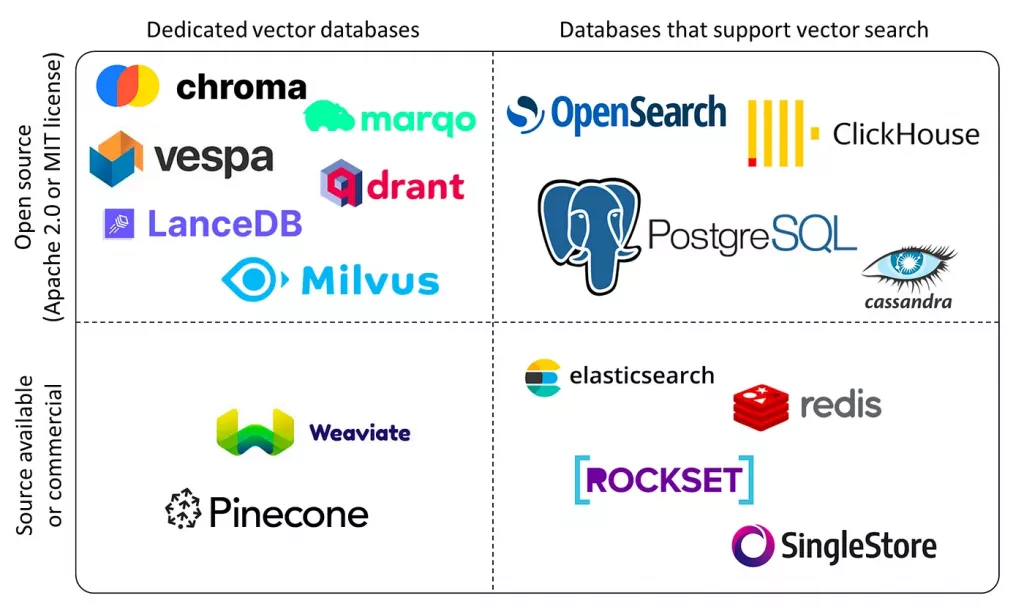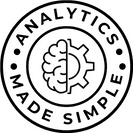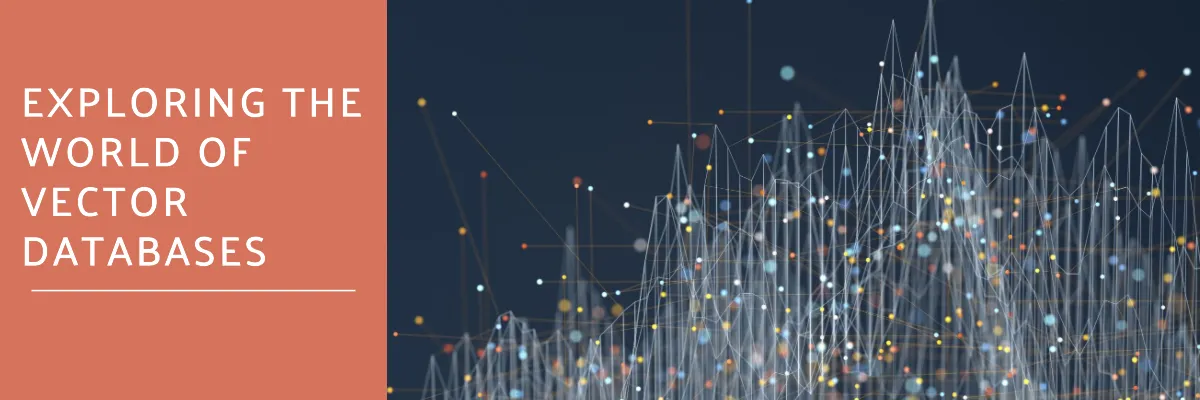Discover the What, Why, and How of Vector Databases
Vector databases are becoming more popular than ever, but you may be wondering – what exactly are they and why does it matter?
In today’s digital information age, data has become an integral part of our lives. From social media platforms to e-commerce websites, every online interaction generates massive amounts of data. Traditional relational databases have been the go-to solution for storing and managing this data but are quickly becoming outdated.
This is where vector databases come in – a new type of database designed specifically to handle the unique challenges posed by modern data. In this post, we’ll break down the key things to know about these next-gen databases so you can get up to speed.
We will explore what vector databases are, their use cases, different platform providers, models, and their uses. We will also discuss why vector databases are gaining popularity and provide examples of their implementation.
Table of Contents
What is a Vector Database?
Vector databases are a type of database that stores and retrieves data based on vectors, which are mathematical representations of data points, features, or attributes. These databases are designed to handle large volumes of unstructured data, such as images, text, video, audio, or event logs. They are optimized for similarity search, which means they can quickly find similar data points based on their vector representations.
What? Let’s decode what that means.
So in a vector database, data points become vector representations. These vectors make it possible to easily uncover relationships and similarities that would be difficult in a traditional database.

For example, a vector database can store an image as a vector of pixels, where each pixel has a value for its color and intensity. A vector database can also store a text document as a vector of words, where each word has a value for its meaning and context (see figure above). A vector database can even store a molecular structure as a vector of atoms, where each atom has a value for its position and chemical properties.
The main advantage of storing data as vectors is that it allows for efficient and fast lookup of similar items by searching for neighboring vectors in the multi-dimensional space. This is done by using special algorithms called k-nearest neighbor (k-NN) algorithms, which find the k most similar vectors to a given query vector.

For example, if you want to find images that look like a cat, you can use a k-NN algorithm to find the k images that have the most similar pixel vectors to a cat image vector.
Vector databases also provide additional capabilities like data management, fault tolerance, authentication, access control, and a query engine. These features make vector databases more than just storage systems, but also powerful tools for operationalizing AI and ML models.
Why Are Vector Databases So Popular Now?
Vector databases are becoming increasingly popular because they can handle large volumes of unstructured data and are optimized for similarity search. This makes them ideal for use in AI and machine learning applications, where large amounts of data need to be processed quickly. Additionally, the rise of deep learning has led to an increase in the use of vector representations of data, which has further increased the demand for vector databases.
What are some other factors leading to the rise in popularity of Vector databases?
- Big Data Explosion: As data continues to grow exponentially, traditional databases struggle to handle the complexity and volume. Vector databases offer efficient ways to manage and query large datasets.
- Advances in Machine Learning: The rise of machine learning has created a demand for databases that can efficiently store and retrieve vector representations of data, making them an essential tool for AI-driven applications. Vector databases seamlessly integrate with machine learning algorithms, facilitating tasks like training and inference.
- Real-Time Needs: With the increasing need for real-time processing and decision-making, vector databases provide low-latency solutions for tasks like recommendation systems and fraud detection.
- Scalability: Vector databases scale horizontally, allowing them to handle vast amounts of data without sacrificing performance. This makes them ideal for applications that deal with large datasets.
- Efficient Querying: Vector databases optimize queries using vector calculations, leading to faster query execution times compared to traditional relational databases. This efficiency enables real-time interactions with data, crucial in applications like chatbots, recommender systems, and fraud detection.
- Flexibility: Vector databases support various data formats, such as text, images, and audio, making them versatile solutions for diverse applications.
Vector Database Use Cases
Vector databases unlock powerful use cases across industries:
- Recommendation Systems: Online retailers and streaming services can use vector databases to recommend products or content based on user preferences and behavior. By analyzing user vectors and item vectors, vector databases can suggest items that are similar to the ones users have liked or purchased before.
- Image Recognition: Social media platforms and security agencies can utilize vector databases to recognize images and classify them into different categories. For instance, Facebook uses a vector database to identify and remove inappropriate content from its platform.
- Natural Language Processing (NLP): Vector databases play a key role in NLP applications. They help computers understand and generate human-like language. Think of chatbots, language translation apps, and sentiment analysis tools. All of these rely on vector databases to make sense of words and phrases.
- Fraud Detection: Financial institutions and e-commerce companies can employ vector databases to detect fraudulent transactions. By comparing transaction vectors to known patterns of suspicious activity, vector databases can flag potential threats and prevent financial losses.
- Personalization: Retailers and marketers can personalize customer experiences by leveraging vector databases. By analyzing customer vectors, businesses can tailor product offerings, promotions, and content to individual customers’ interests and preferences.
- Risk assessments: Vector databases can be used to assess risk by analyzing data from a variety of sources, such as financial statements, customer data, and social media data. For example, a vector database could be used to assess the risk of a loan default by analyzing the borrower’s financial history and social media activity.
- Inventory management: Vector databases can be used to manage inventory by tracking the movement of goods and predicting demand. For example, a vector database could be used to track the inventory of a retail store and predict when certain items will need to be reordered.
- Machine learning: Vector databases can be used to train machine learning models by providing them with large amounts of data. For example, a vector database could be used to train a model to classify images or to predict customer behavior.
4 Different Vector Embedding Models and Their Uses
Vector databases can use various models to represent data, each with its own strengths here are some of the more common ones that you may come across:
- Word Embeddings: These models represent words or phrases as vectors, making them suitable for language-related tasks like sentiment analysis and translation.
- Face Embeddings: Used in facial recognition systems, these models convert facial features into vectors, allowing for easy comparisons and identification.
- Graph Embeddings: For applications involving complex relationships, like social networks or recommendation systems, graph embeddings are used to map nodes and edges into vector space.
- Time–Series Embeddings: When dealing with time-dependent data, time-series embeddings can uncover patterns and trends over time, assisting in forecasting and anomaly detection.
Different Vector Database Platform Providers

Several technology companies offer vector database platforms and tools including:
RedisAI: RedisAI is an extension of Redis, a widely-used in-memory data store. It’s great for real-time applications and integrates well with machine learning frameworks.
Faiss: Developed by Facebook AI Research, Faiss is designed for efficient similarity search and clustering. It’s particularly popular in recommendation systems.
Annoy: Annoy is a C++ library for approximate nearest neighbor search. It’s known for its simplicity and speed, making it a popular choice in many applications.
Weaviate: Weaviate offers a scalable vector database that allows developers to build intelligent applications with ease. Its features include real-time indexing, filtering, and aggregating capabilities.
Milvus: Milvus is another popular vector database that supports multiple programming languages and provides state-of-the-art algorithms for similarity search and clustering.
Pinecone: Pinecone is a managed vector database service that simplifies the process of building and deploying machine learning applications. It offers automated scaling, backup, and recovery features.
Qdrant: Qdrant is a distributed vector database built on top of Apache Cassandra. It offers robust scalability and performance for applications requiring high throughput and low latency.
There are many more, these are just the ones that I did some research on, but you get the idea. There are a lot of new and different players in this space and they will just continue to grow and expand as the use cases become more prevalent in business.
Should You Consider a Vector Database?
So when does it make sense to use a vector database? Here are some key considerations:
- Complex Data: If your data has intricate relationships, such as social networks or product recommendations, vector databases can help capture these nuances.
- Real–Time Requirements: When you need to process data in real-time, especially for applications like fraud detection or live recommendations, vector databases excel.
- Large–Scale Data: If you’re dealing with massive datasets that traditional databases struggle to handle, vector databases provide scalability and efficiency.
- Speed: Fast analytics and insights from unstructured data is critical.
- Analytics: Powerful and fast machine learning applications are critical to your business.
If those needs resonate, a vector database may be something to think about!
Here are some additional links and articles related to Vector DBs that I used to research for this article:
- https://www.projectpro.io/article/vector-databases/903
- https://www.forbes.com/sites/adrianbridgwater/2023/05/19/the-rise-of-vector-databases/?sh=24aa505e14a6
- https://levelup.gitconnected.com/the-future-of-ai-in-finance-vector-databases-and-beyond-6d38302ca210
- https://opensourceconnections.com/blog/2022/10/26/what-is-vector-search-a-guide-to-the-new-frontier/
The Bottom Line
Vector databases are currently at the forefront of modern data management, leading us to insights we might never have discovered with traditional methods. From recommendation engines to NLP and image analysis, they’re powering applications that we use in our day-to-day lives. As big data and machine learning continue to grow and expand, vector databases are likely here to stay.
So, whether you’re a business owner, data scientist, data engineer, data enthusiast, or simply curious about the technology behind your favorite apps, keep an eye on vector databases you’ll likely be hearing more and more about them in the technology space.
I hope this has been informative and I have given you some insights into the world of Vector DBs
As always Thanks for reading and Cheers!
-J
Check out my web store below for awesome analytics-inspired designs!









